
LP: I found this series of illustrations you did for a story called "Here Come the Brides" by Geraldine Napier...
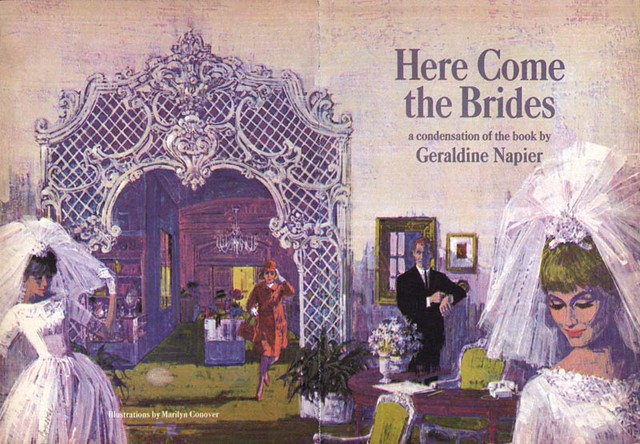
MC: Oh God, that's early stuff. That was in... '61 or '62... I was in Westport CT when I did those and working for some goofy studio in Boston, I think. I went on to be represented in New York and did my best stuff... Time covers and illustrations for magazines... and then I went on to portraits from there.
LP: Well I'd love to know more about that - about your whole career, in fact.
MC: Well, I used to do all the beautiful girls standing by televisions and new refrigerators and all that. The magazines were crammed with gorgeous illustrations back then.
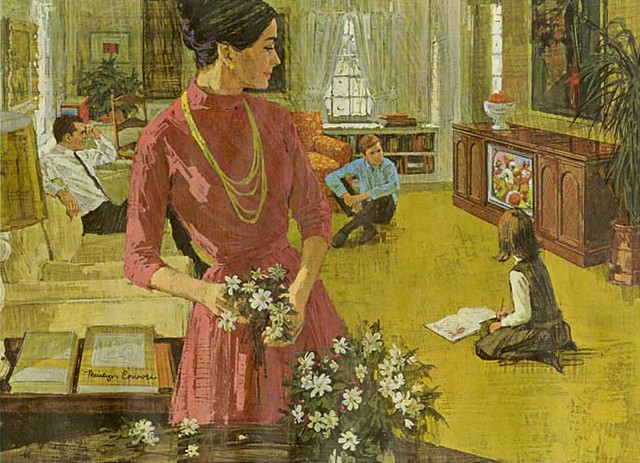
LP: Yeah, I just love all the stuff you find in the magazines back then; Al Parker, Al Dorne... all the guys from the Famous Artists School...
MC: That Famous Artists School was a piece of crap. I mean those fellows didn't do the correcting [of student assignments].

It was right there in Westport, a few blocks away from me, and the only artists who did any of the correcting were guys who couldn't make it in the real illustration business anymore. And they were never allowed to handle the same person - the same student - more than once.
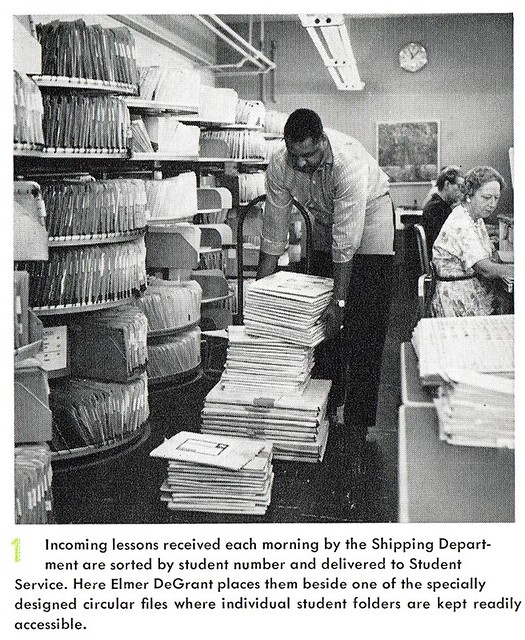

MC: It was started when a bunch of those gorgeous guys got smashed at a party and thought it'd be a great idea - and it was! - and they made money forever, I mean ten or twenty years. When I used to go get the train to New York I used to go by the plant every day but, I mean, that was just a sham to get money out of little people in Dubuque and everywhere else.

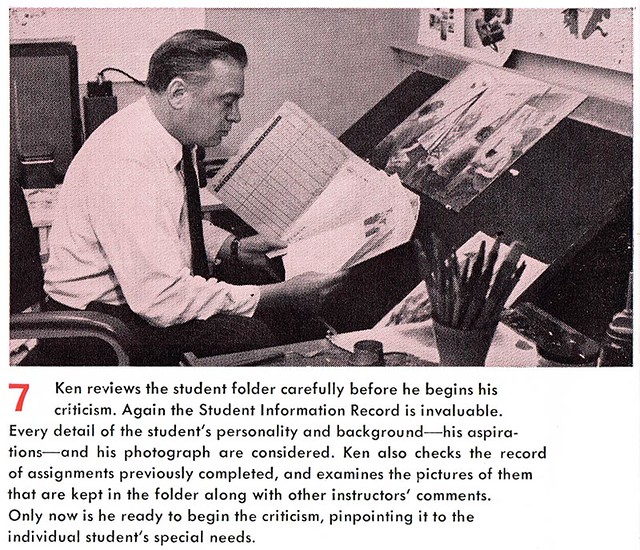
MC: I mean if I was an artist working there and I wanted to follow up with you and you wanted to follow up and ask me questions; if you wanted to contact a real artist, you couldn't do that because they didn't want you to develop a relationship with a real artist because that would circumvent the slobs that were running the thing. I mean I can't tell you how much I wouldn't use that 'school' as a beacon of any sort. And those guys in the beginning, I mean they invested in it and that was that.
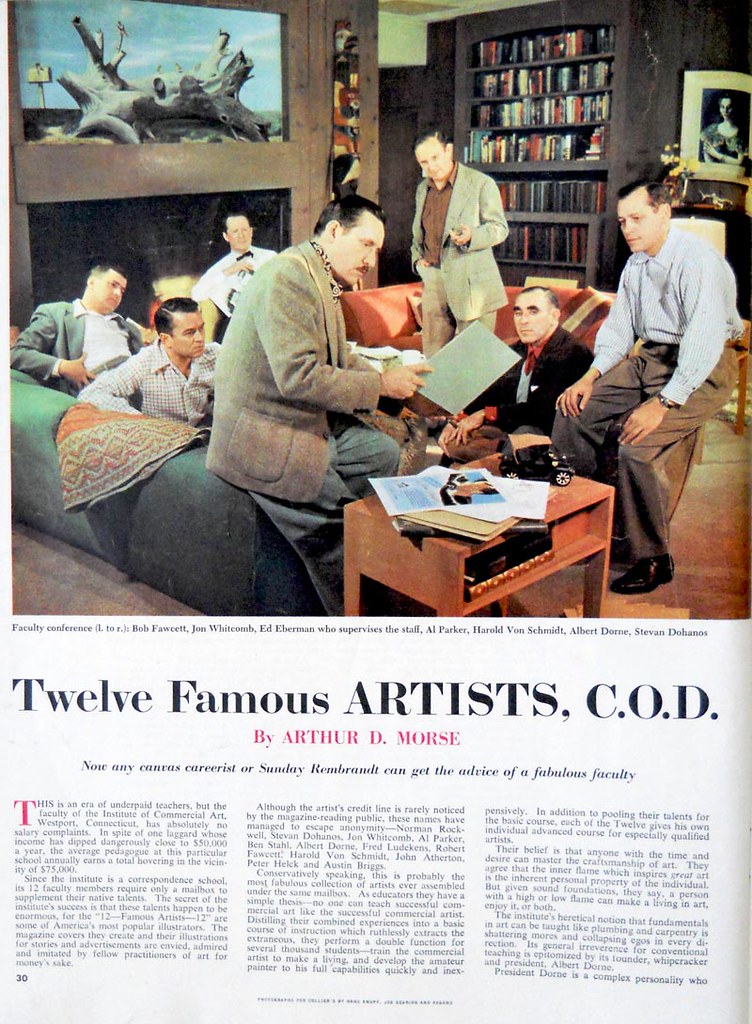
LP: Can you tell me about the beginning of your career?
MC: I started out with Bielefeld Studios in Chicago...
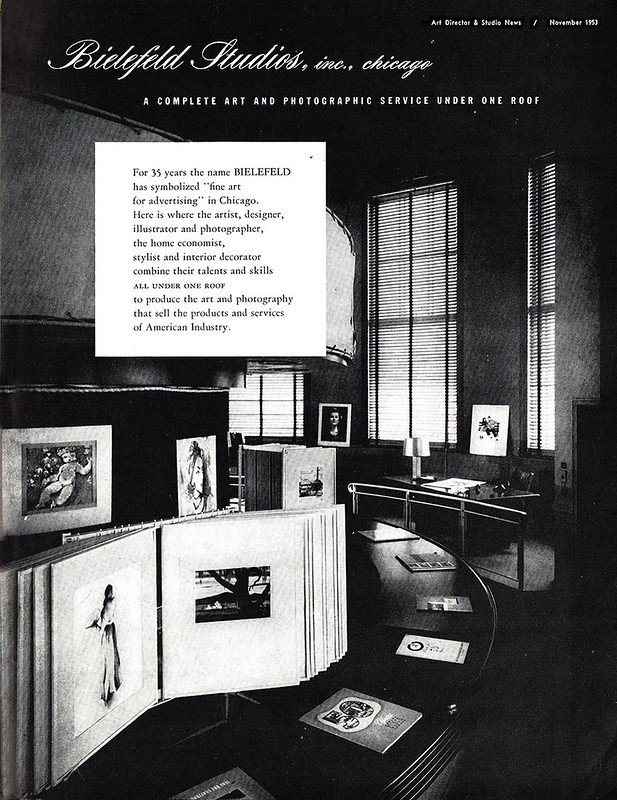
... then with Kling Studios (that was a big studio).

They had Tom Hall and Howie Forsberg - that was huge at that time in Chicago. Do those names ring a bell? Tom Hall?
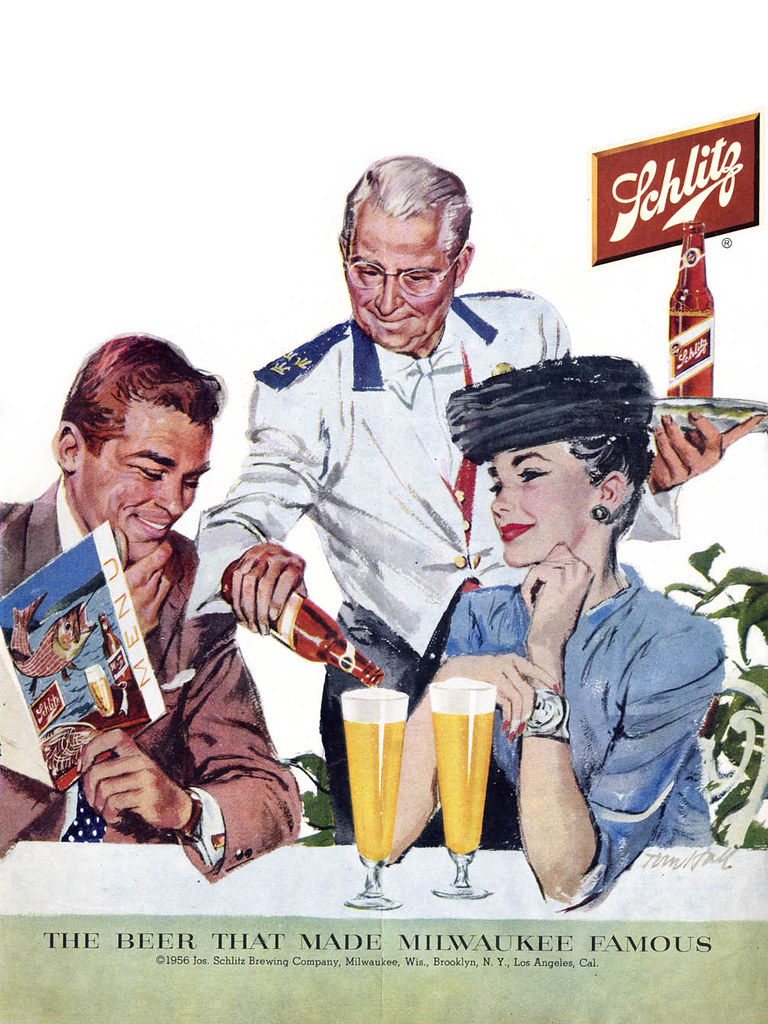
LP: Oh, absolutely. I've talked to Tom Hall's daughter as a matter of fact. So were you working in Chicago or was that long-distance work?
MC: I was born in Chicago. That's where I started. That's where I worked for my first 'name' studio and where my husband, who was also an illustrator and had been a Marine, worked for Gil Elvgren.
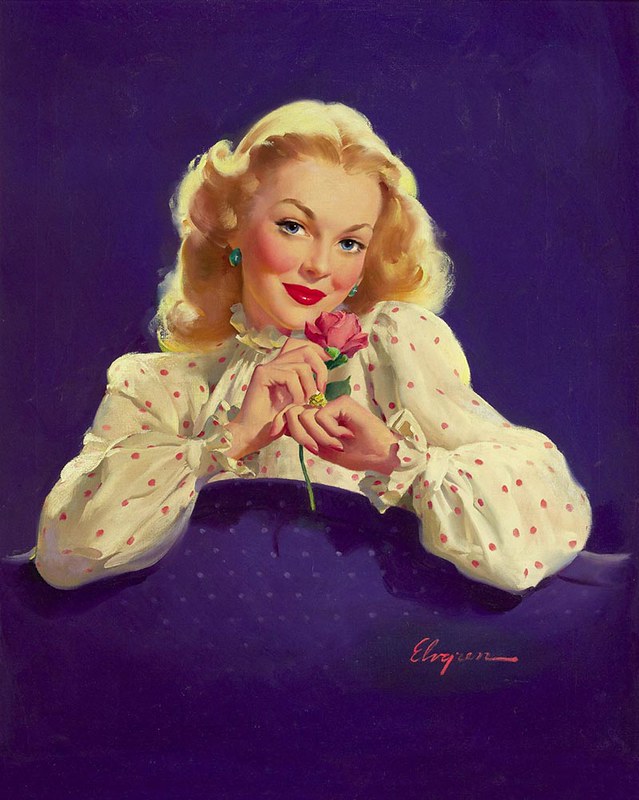
LP: I'm sorry, did you just say your husband worked for Gil Elvgren?
MC: He was his apprentice, yes. Why?
LP: Marilyn, I don't know if you're aware of this but today Gil Elvgren's originals sell for as much as two or three hundred thousand dollars each.

MC: Oh, we used to be in the studio when he was painting the damn things. You know, they were really beautifully done... what did you say; two or three hundred thousand each?
LP: Yeah.
MC: Oh my god... he was thirty five when Hendrick [Marilyn's husband] and I were twenty. We were just wide-eyed apprentices but...

... you know who Dave Garroway was? He was the first one to do the Today Show out of Chicago - he was part of this whole party group we had with Gil and Joyce Ballentyne. She worked with Stevens-Gross with Gil Elvgren.

LP: Maybe you could explain something to me... were they all students of Haddon Sundblom? Because I know he had many apprentices and they all have sort of a similar style...
MC: Gil was. Oh yes, Haddon Sundblom invented the Coca-Cola Santa Claus. He made Santa Claus the big, jolly, chubby guy we all know today.
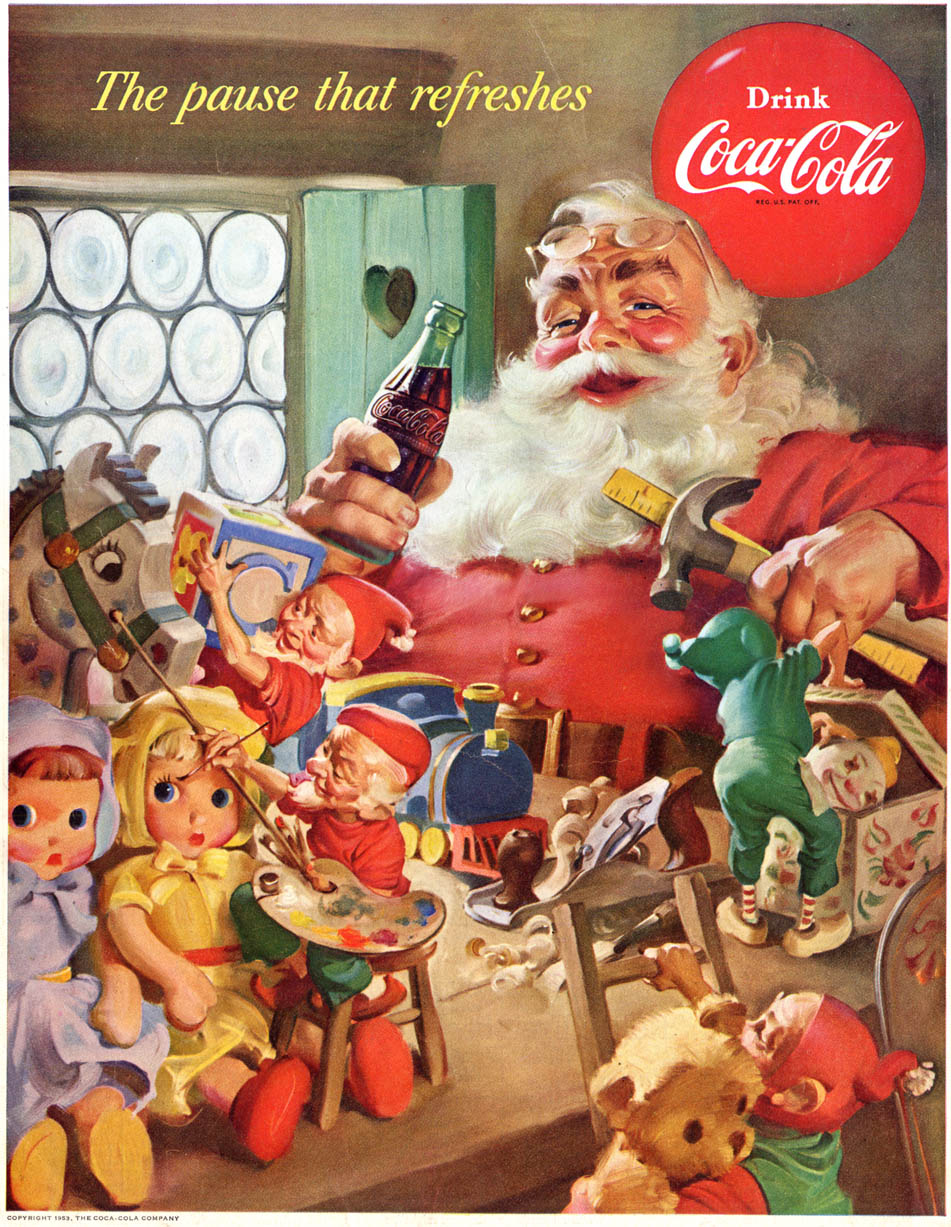
MC: His son jumped off the Brooklyn Bridge or one of the bridges, I think. He was not too great a father.
LP: Oh my gosh!
MC: But... that's happened to a lot of great people. Y'know, it's making me sick. I don't want to think of those years anymore. They were the hardest years of my life.
Continued tomorrow









Post a Comment